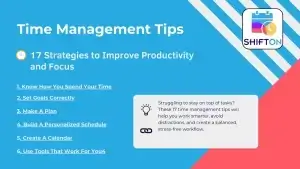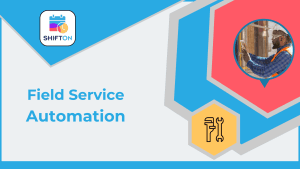How can Shifton optimise restaurant operations
Competent organisation of workflow is crucial for the successful operation of a restaurant. The lack of effective schedules for workers can easily lower the level of customer service and increase the risk of staff departure.
This article recommends how the Shifton app can help restaurant owners improve the efficiency of their staff.
How to improve the productivity of restaurant employees?
To always be aware of what is happening in the restaurant, set your work schedules with the Shifton online app. Thanks to its easy-to-use structure, this application can be implemented for tracking of working hours in many catering institutions. Restaurant managers have instant access to all the information regarding schedules, employee shifts, and more since the data is stored in one place.
Modules available in the Shifton app are specially developed for restaurants and allow smart distribution of shifts between employees, taking into account overtime hours. These options significantly save time spent on scheduling and numerous revisions, which directly influences staff productivity.
Moreover, Shifton provides all employees with the option to propose schedule changes and be notified of all the updates in working schedules. For example, if there is a need to replace a sick or absent employee, their colleagues get corresponding notifications about an open shift and can quickly take it over. If necessary, the request for confirmation of the swap is sent to the manager or shift supervisor, which provides full control of all operations with the schedule.
Shifton is the optimal online app for increasing the motivation among employees
When creating a schedule for a restaurant, it is essential to take into account the workload on holidays and other dates with peaks in visitors. The Shifton online app allows you to create schedules with the most optimal staff rotation for the busiest shifts (for example, on Friday evenings or holidays).

Accordingly, each employee will have the opportunity to earn additional income from time to time. Such an approach to scheduling allows you to kill two birds with one stone: keep experienced workers focused and give newcomers a chance to prove themselves.
For effective restaurant management, you can use other methods of employee motivation. For example, the Shifton “Bonuses and Penalties” module displays the relevant information to the managers of the restaurant, and employees can check the amount of their earnings for the current month in their accounts. This awareness allows the employees of the restaurant to effectively control their income.
Summing up
The Shifton online app provides restaurant management with a complete picture of the shifts scheduling. Shifton allows managers to reduce the time spent on creating effective work schedules and focus on other aspects of running a restaurant business.
The Shifton module “Pay rate reports” helps to correctly calculate the salary of employees and keep track of overtime hours. The “Bonuses and Fines” module records all rewards and fines. The “Attendance” module displays the real time when employees start and end their shifts and breaks and summarises this information for statistics.
Moreover, Shifton developers always listen to the requests of customers and are ready to customise the capabilities of the app to suit the needs of your business.
* All original photographs courtesy of DialogMarket call centre. The review of Shifton by Coffee Molly founder Irina Uskova can be found here.
































